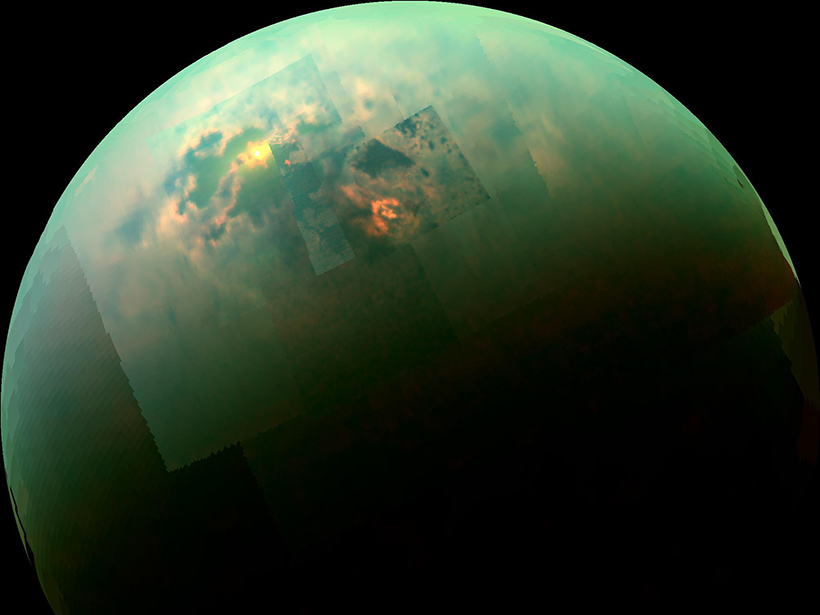Thanks to NASA’s Cassini spacecraft—which will destroy itself in Saturn’s atmosphere on Friday—scientists have learned a lot over the past 13 years about Saturn’s largest moon, Titan. They know about its glassy hydrocarbon lakes, its swirling, icy dunes, and its odd, methane rainstorms.
But one of the puzzles the spacecraft has not yet solved involves Titan’s atmosphere. It contains inexplicably large and complex strings of hydrogen and carbon ions, among other gases.
The very fact that Titan has any atmosphere at all is weird, said Sarah Hörst, a planetary scientist at Johns Hopkins University in Baltimore, Md., who studies the atmospheres of faraway worlds. Titan is a small, frozen satellite, nearly twice the size of our own moon, orbiting Saturn about 1 billion kilometers from the Sun. How did an atmosphere form? Moreover, it’s made up of 98% nitrogen, which makes it eerily similar to Earth’s atmosphere. Some scientists even think of Titan as a primordial Earth, before life started pumping out oxygen.
But once you get past the strangeness of a moon hosting a thick, nitrogen-heavy atmosphere, the real fun begins, explains Hörst, who also is a member of Eos’s editorial advisory board.
Eos teamed up with the American Chemical Society’s Matt Davenport, host of the Speaking of Chemistry Web series and associate editor at Chemical and Engineering News, to ask Hörst about what makes Titan’s atmosphere so intriguing. We learned about how scientists discovered huge molecules floating in the atmosphere, how a tricky engineering problem almost made scientists overlook the weirdness, and what scientists do on the ground to investigate the hazy world.
But don’t let us spoil anything—watch the video below.

—JoAnna Wendel (@JoAnnaScience), Staff Writer
Citation:
Wendel, J. (2017), The weird, wonderful science behind Titan’s atmosphere, Eos, 100, https://doi.org/10.1029/2017EO082037. Published on 13 September 2017.
Text © 2017. The authors. CC BY-NC-ND 3.0
Except where otherwise noted, images are subject to copyright. Any reuse without express permission from the copyright owner is prohibited.

